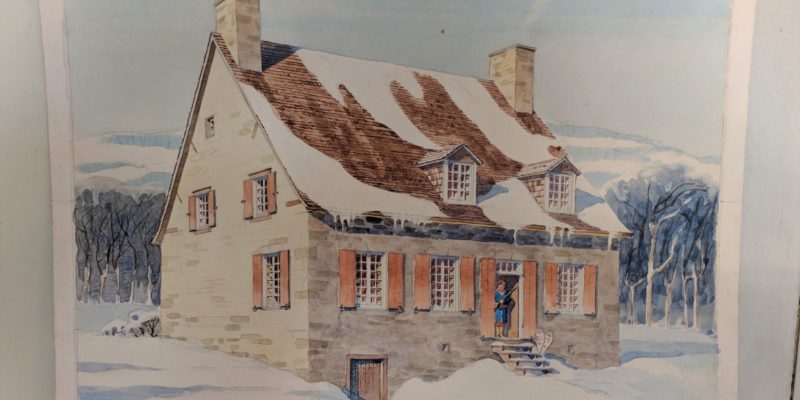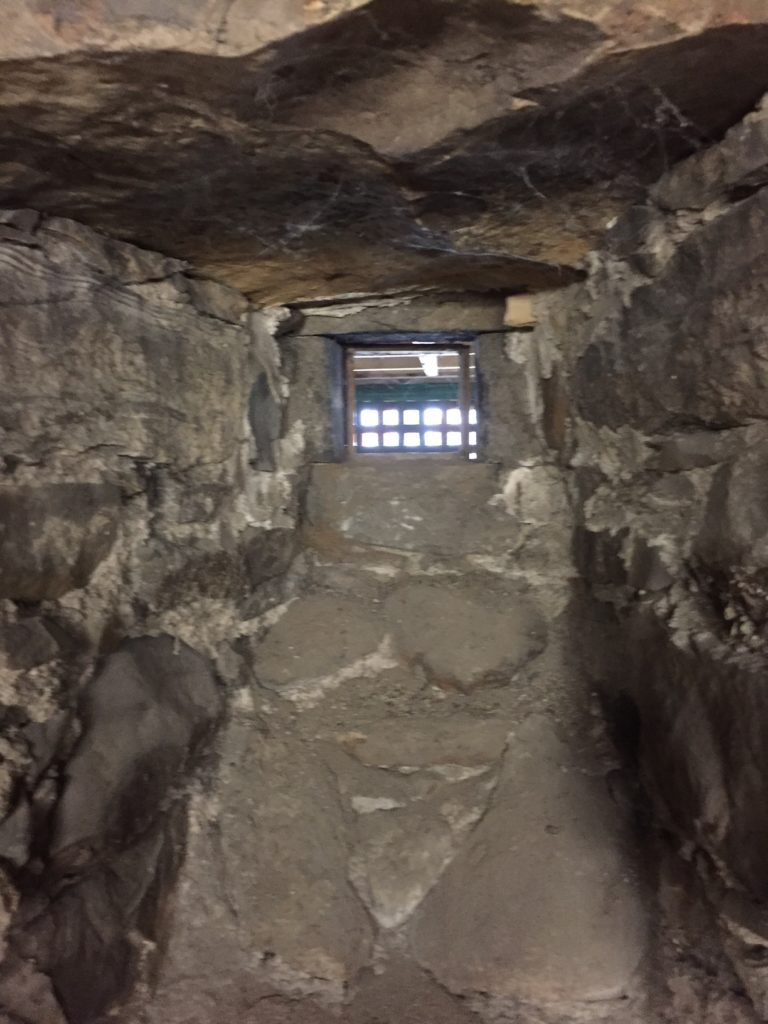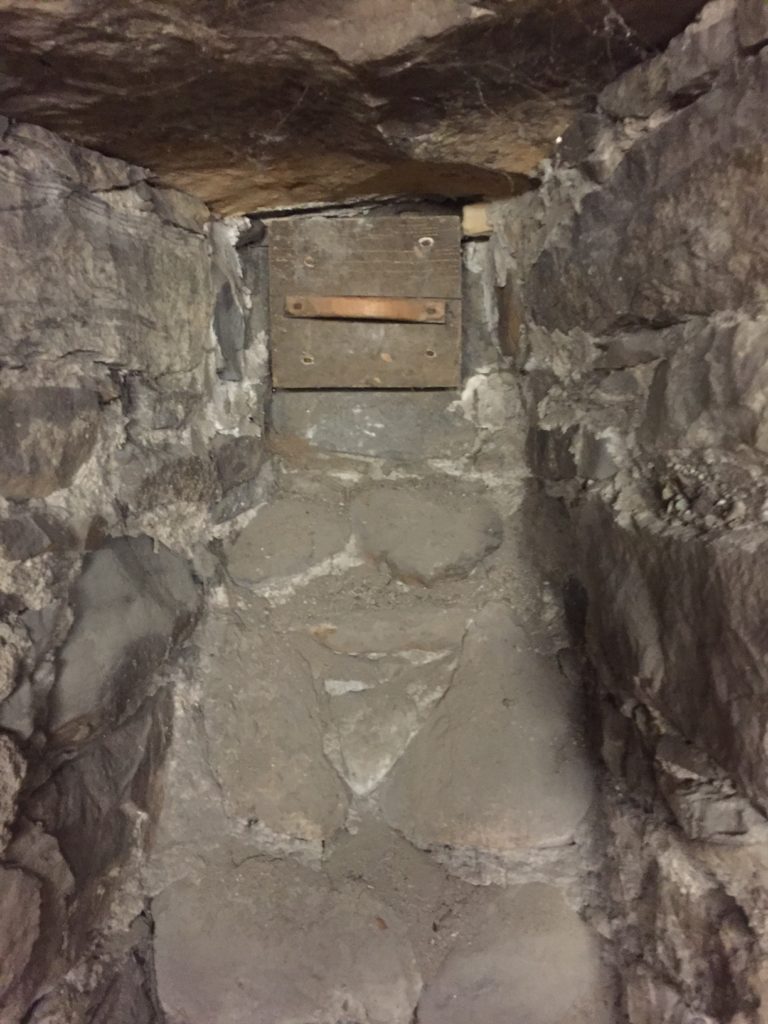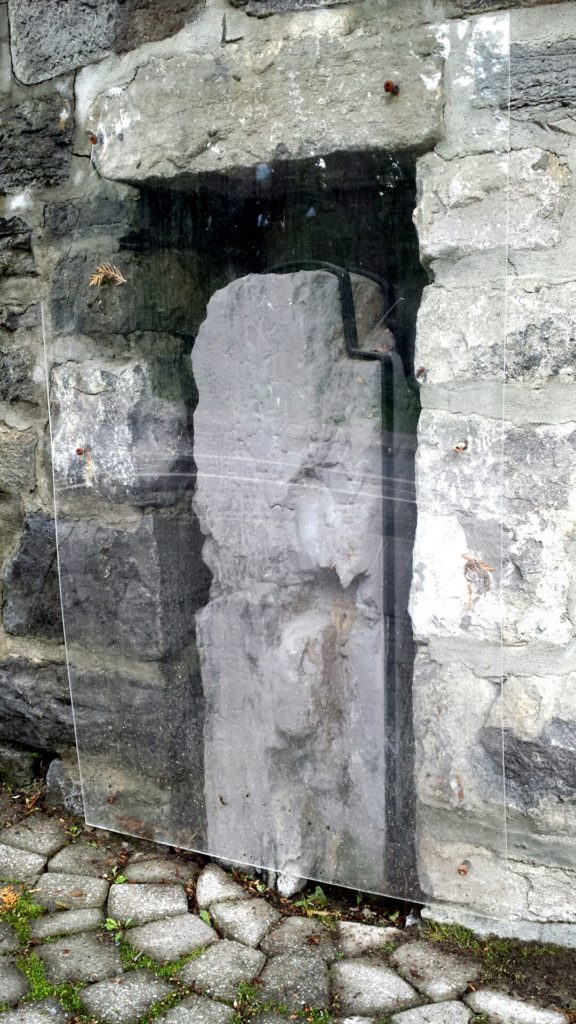Written by Delia Oltean –
On 4 August 1701, the French concluded an agreement with the Indigenous people called “the Great Peace of Montreal”. This agreement between the Indigenous communities and Louis-Hector de Callière ended war for the Indigenous people. For their part, the French were responsible to settle conflicts between the different Indigenous communities.
In 1739, when Jean Hurtubise had the idea of having a house built—the famous house in which six generations of Hurtubise would be born—he called upon a mason by the name of Jean Bertrand. Together, the two men drew up a contract in which appears an unusual and different architectural element whose precise use we still do not get.
Today, hidden by the gallery at the front of the house, two holes still exist in the masonry of the basement, and it is even possible to see them from inside the house by visiting the highest level. The small size of these openings has puzzled many and has given rise to all sorts of speculations that have even created a small legend. Indeed, many believed that these two holes had the function of loopholes to allow the inhabitants to defend themselves although “the Great Peace of Montreal” was signed in 1701! In fact, the small number of these openings and their size seem to indicate instead that the real function of this architectural element was to allow ventilation of the basement space (Stewart and Robichaud, 2001, p.44).
An interesting artefact is located along the Grand chemin de la Haute-Folie (now the chemin Côte Saint-Antoine): a milestone. The purpose of these engraved stone pillars was to indicate the distance (in miles). They can be considered as the ancestors of our modern road signs. This artefact is one of the last two located on the island of Montreal and in addition to being the only one still visible. This artefact is located on the east side of King George Parc. Can you find it?
Sources :
- Stewart, A. et Robichaud, L. (mai 2001). Étude patrimoniale de la maison des Hurtubise. Institut d’histoire de l’Amérique française.
- Pointe-à-Callière. (s.d.). La Grande Paix de Montréal. Musée Pointe-à-Callière. https://pacmusee.qc.ca/fr/histoires-de-montreal/article/la-grande-paix-de-montreal/



